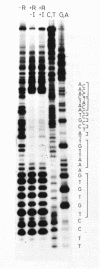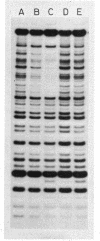Abstract
A method for studying the sequence-specific binding of proteins to DBA is described. The technique is a simple conjoining of the Maxam-Gilbert DNA-sequencing method and the technique of DNAase-protected fragment isolation. Fragments of a 5' end-labelled, double-stranded DNA segment, partially degraded by DNAase in the presence and absence of the binding protein, are visualized by electrophoresis and autoradiography alongside the base-specific reaction products of the Maxam-Gilbert sequencing method. It is then possible to see the protective "footprint" of the binding protein on the DNA sequence. The binding of lac repressor to lac operator is visualized by "footprinting" as an example. Equillibrium estimates indicate that 10-fold sequence-specificity (differential binding constant) could be studied easily using this technique.
Full text
PDF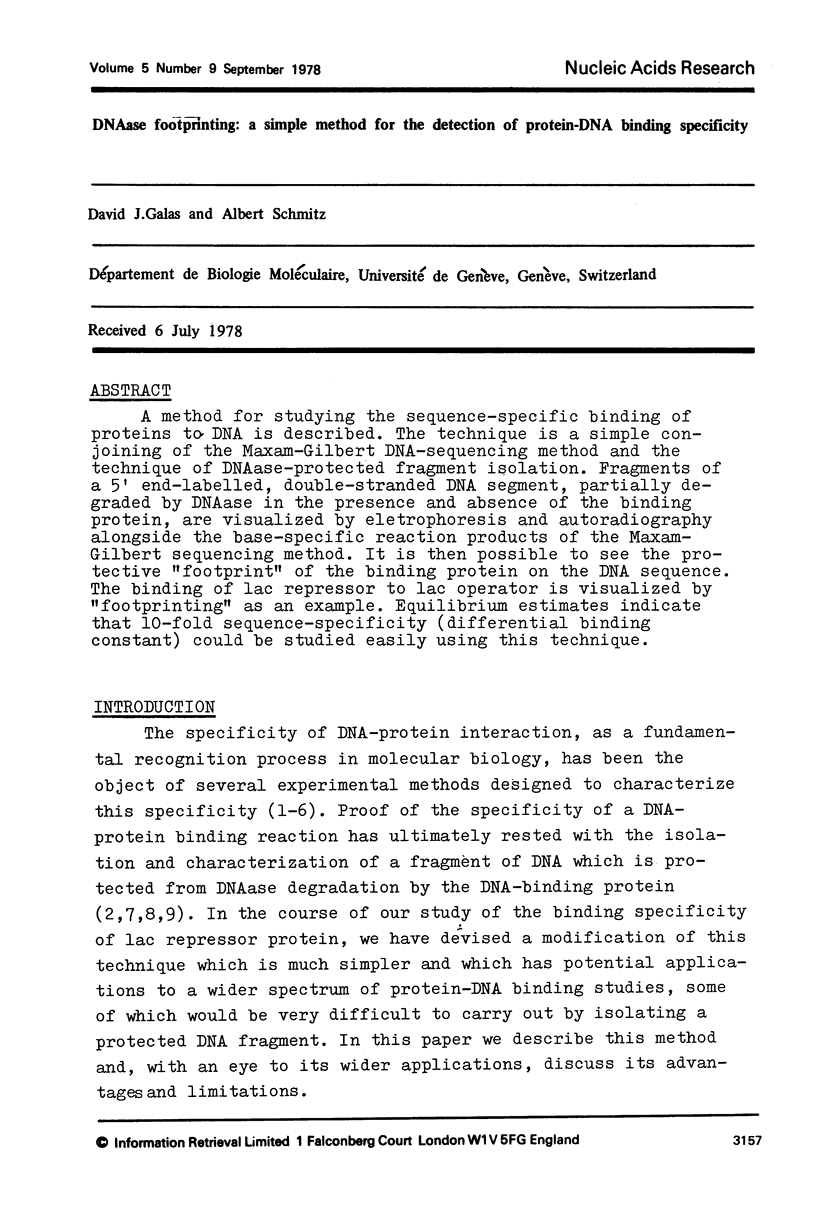
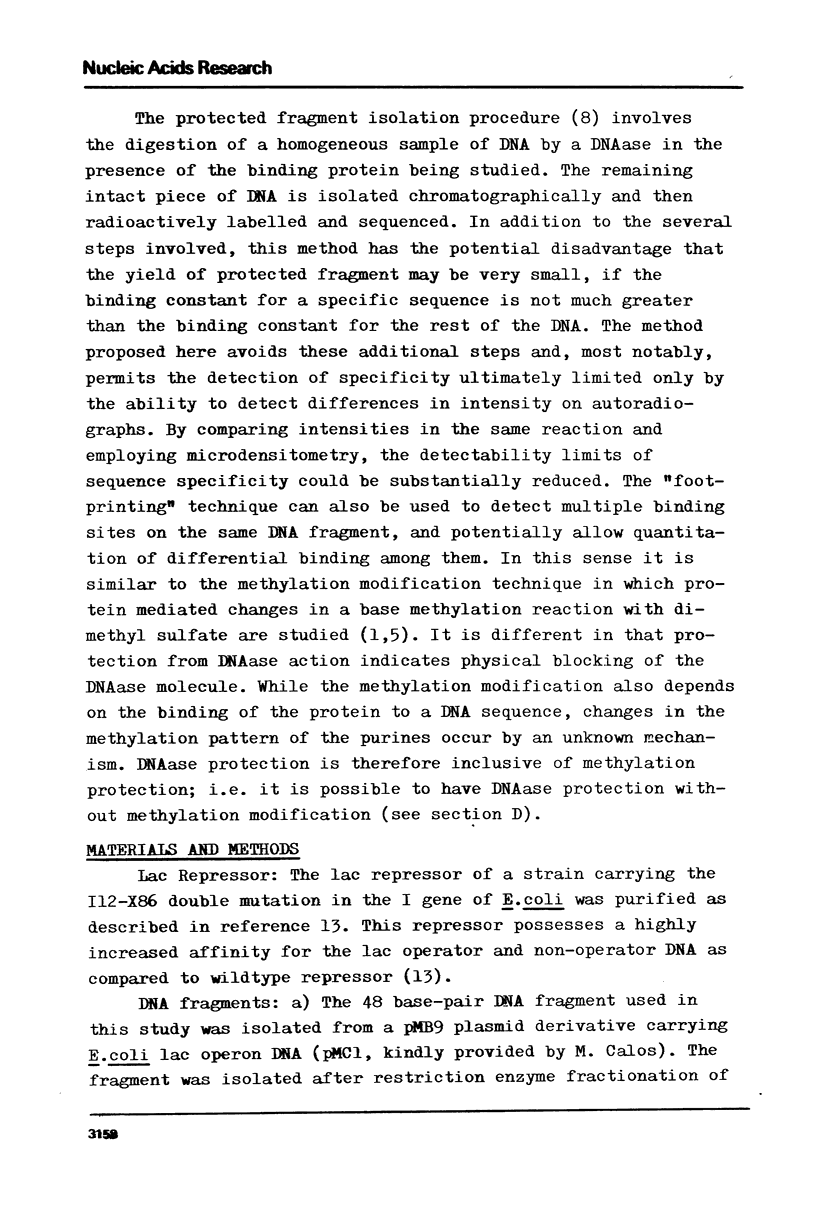
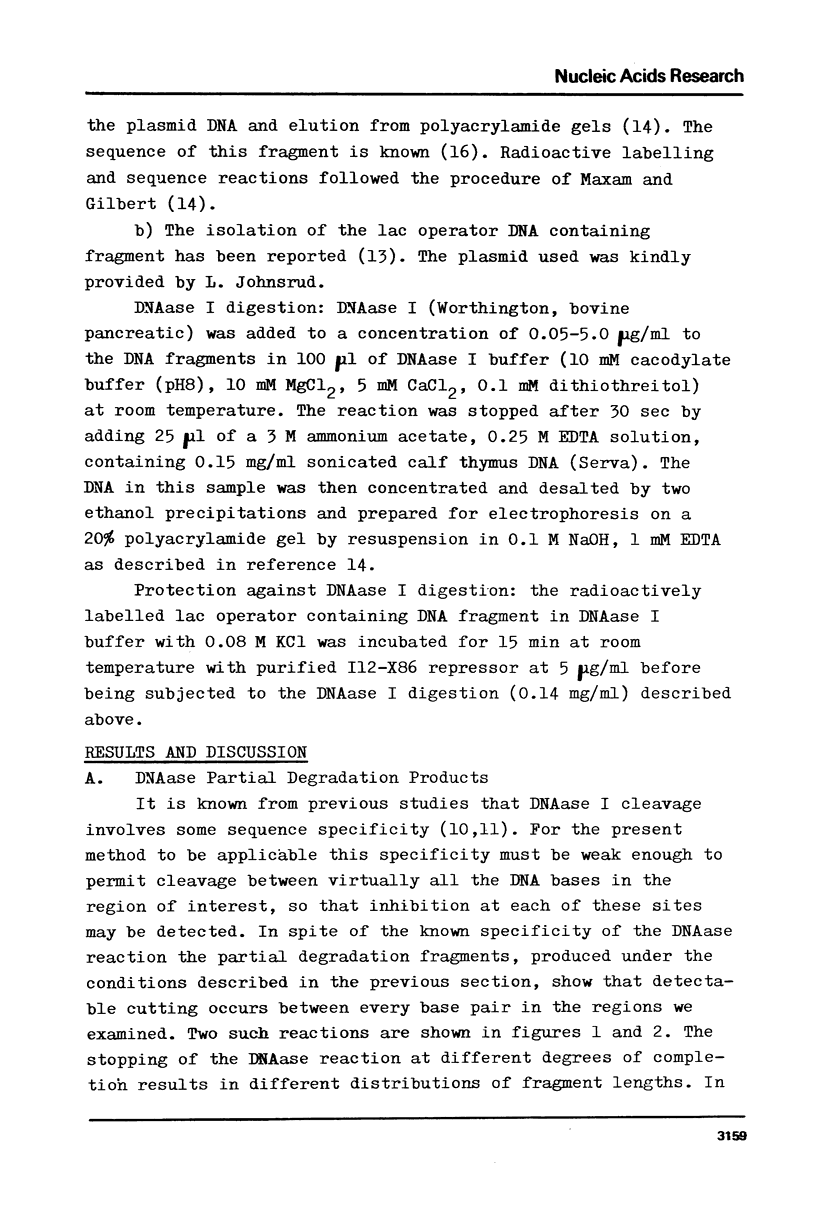
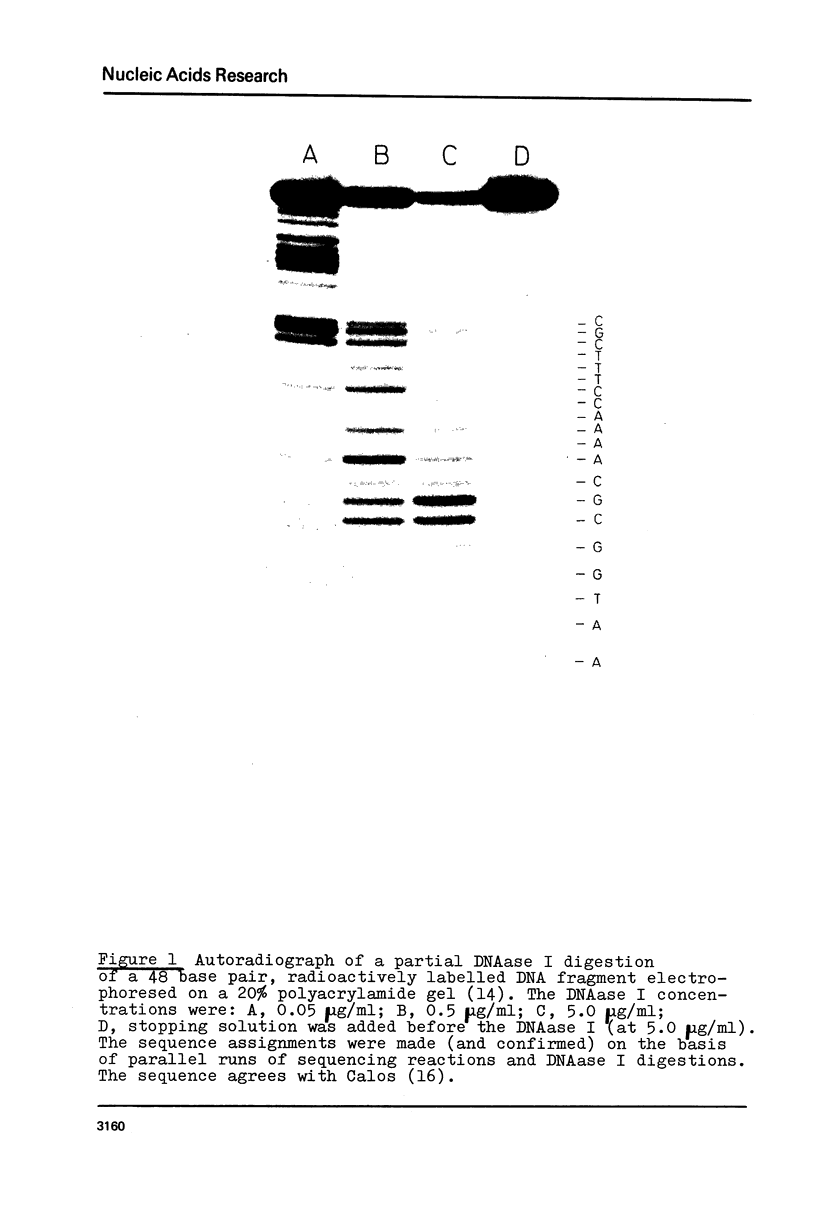
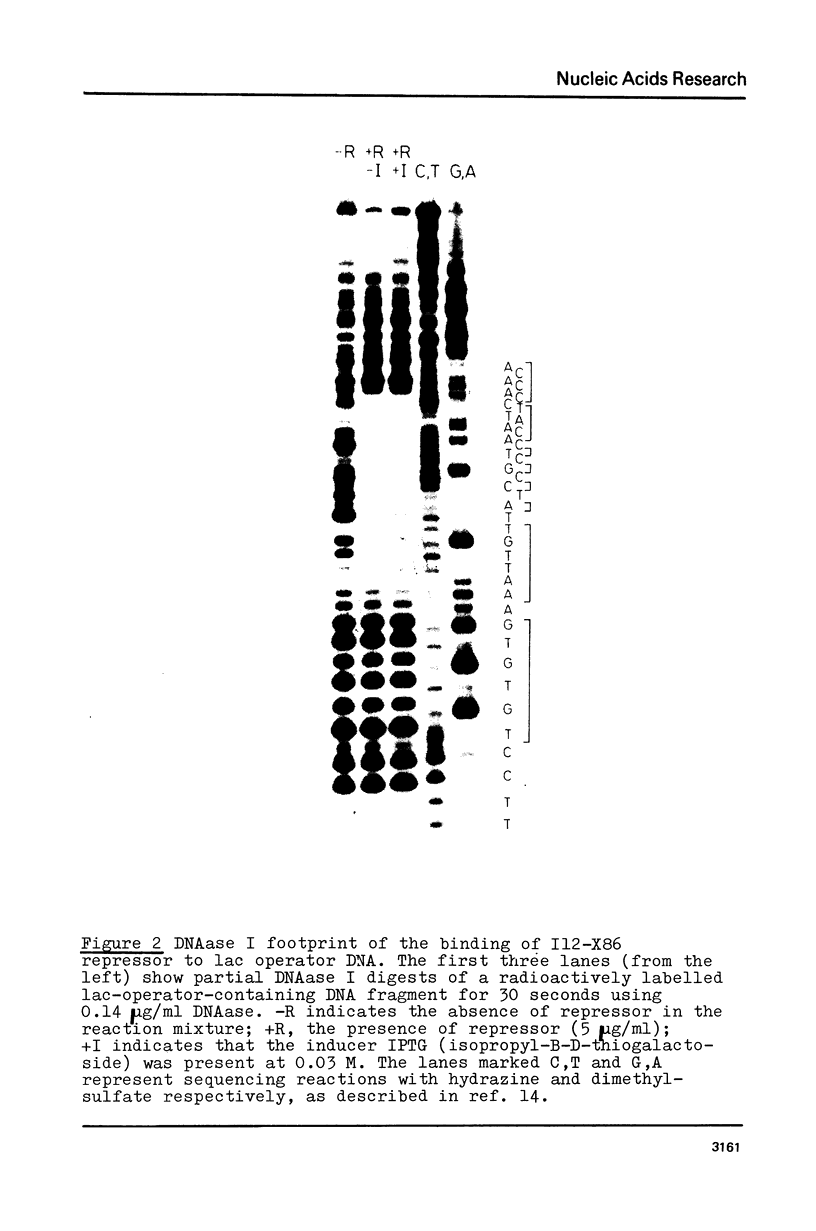
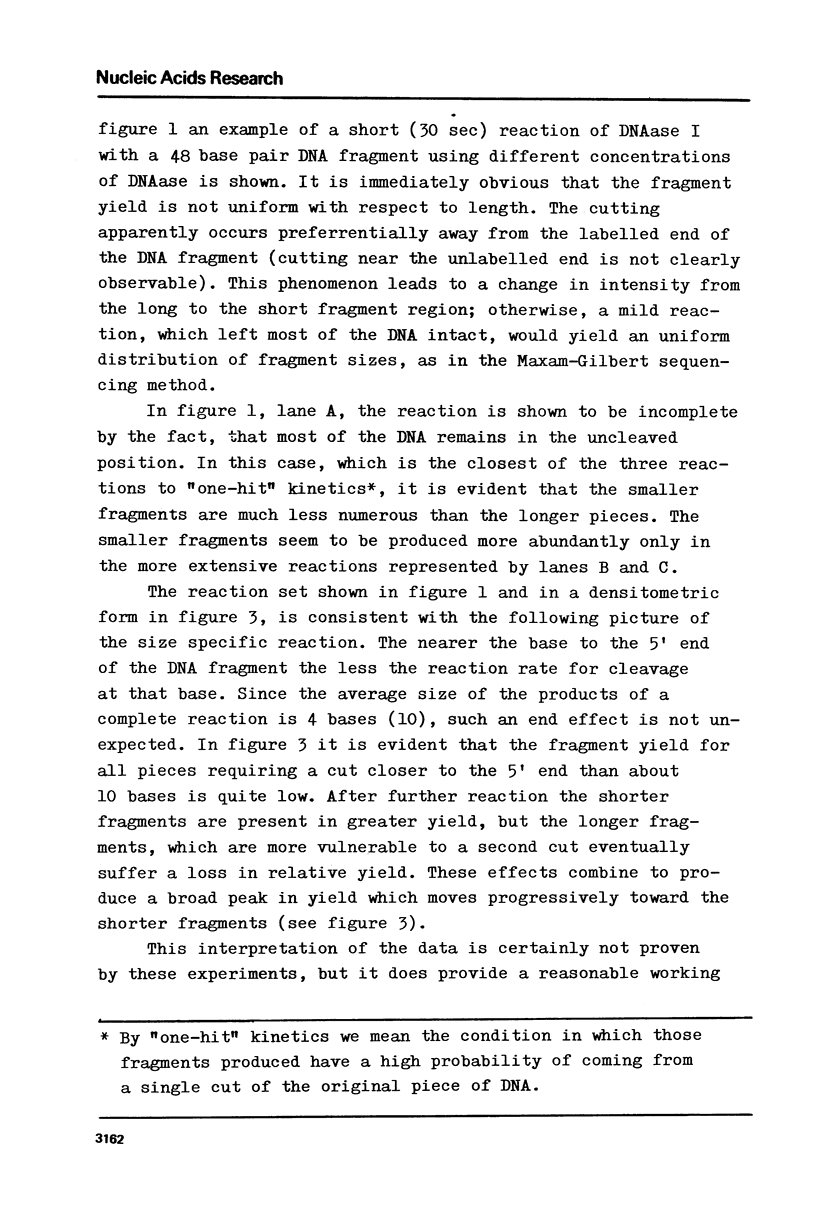
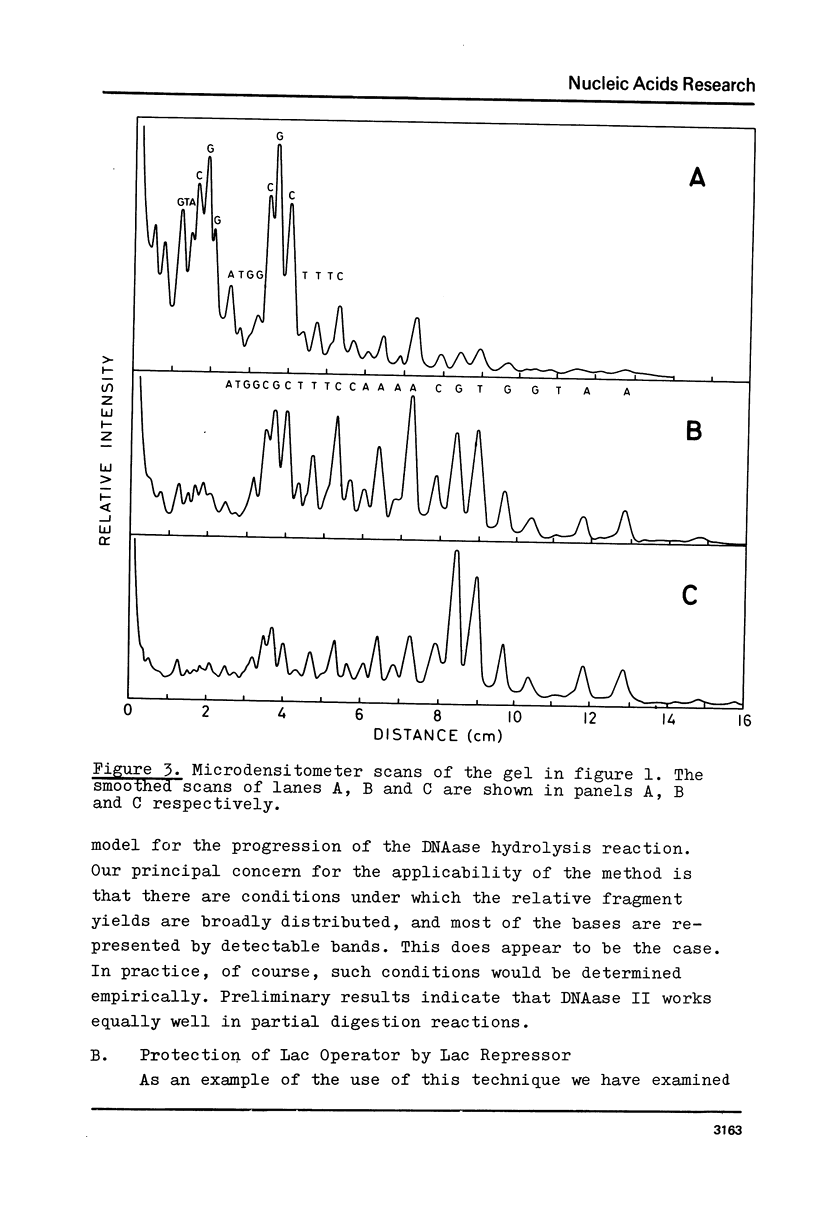
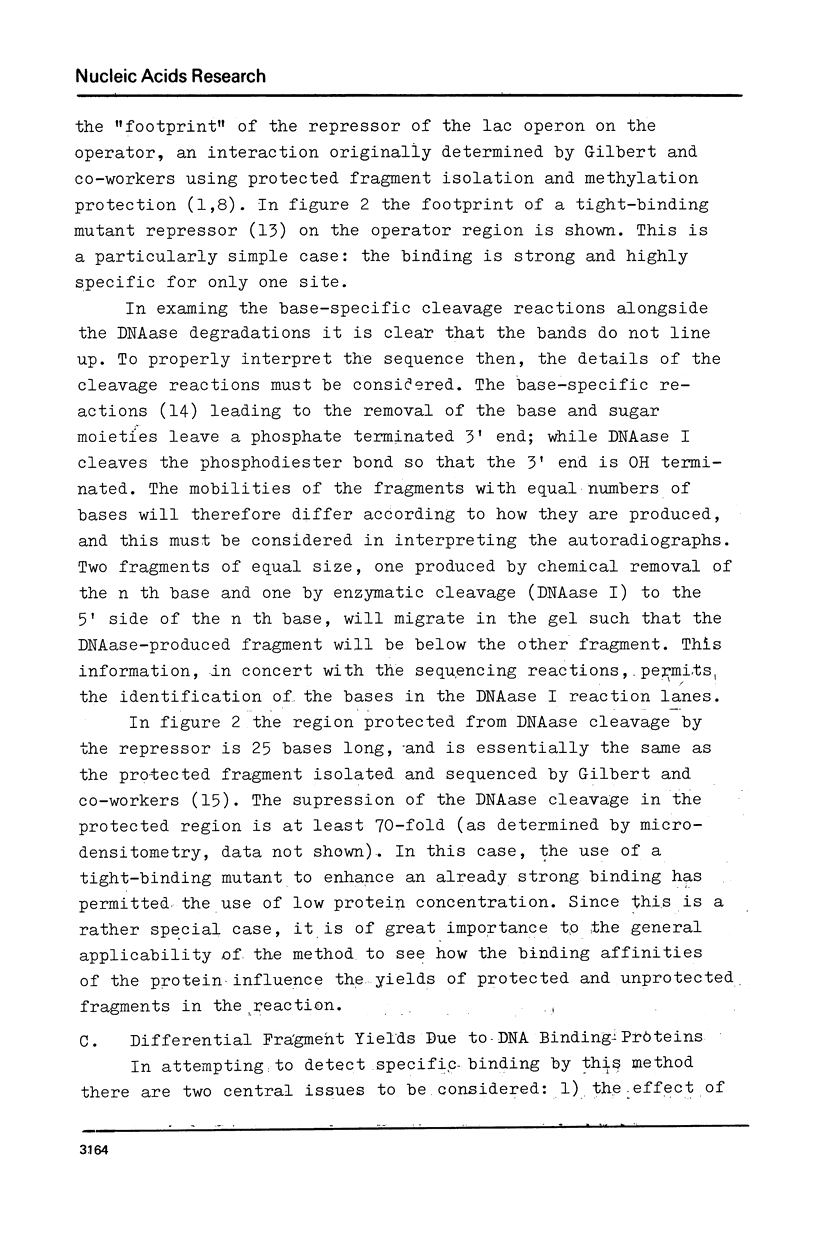
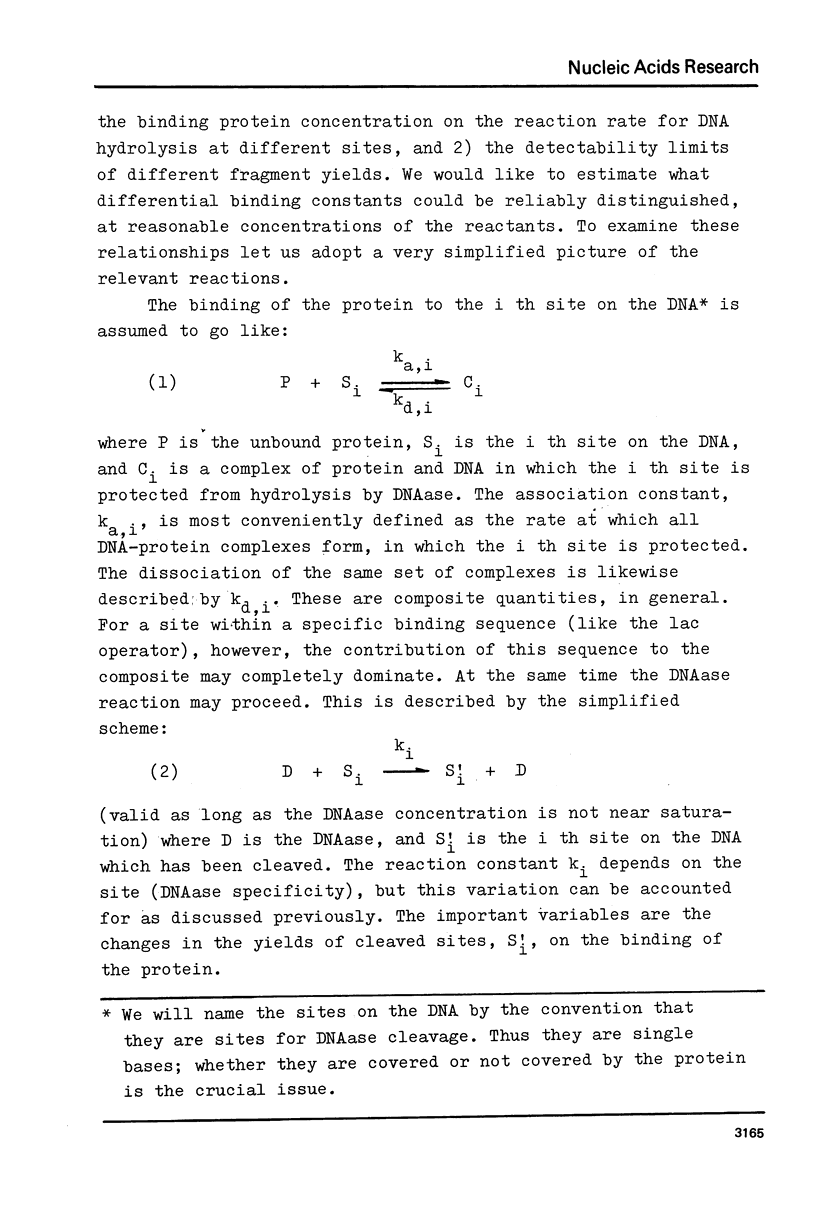
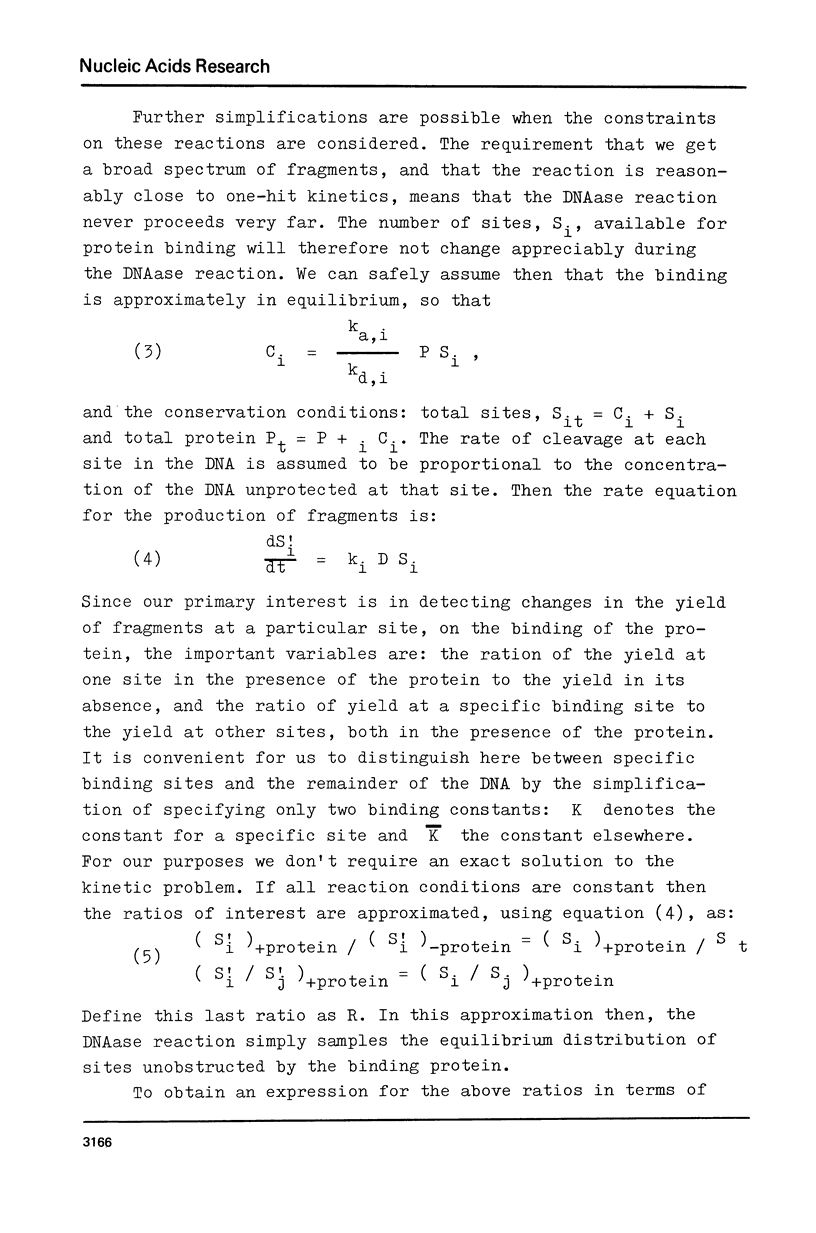
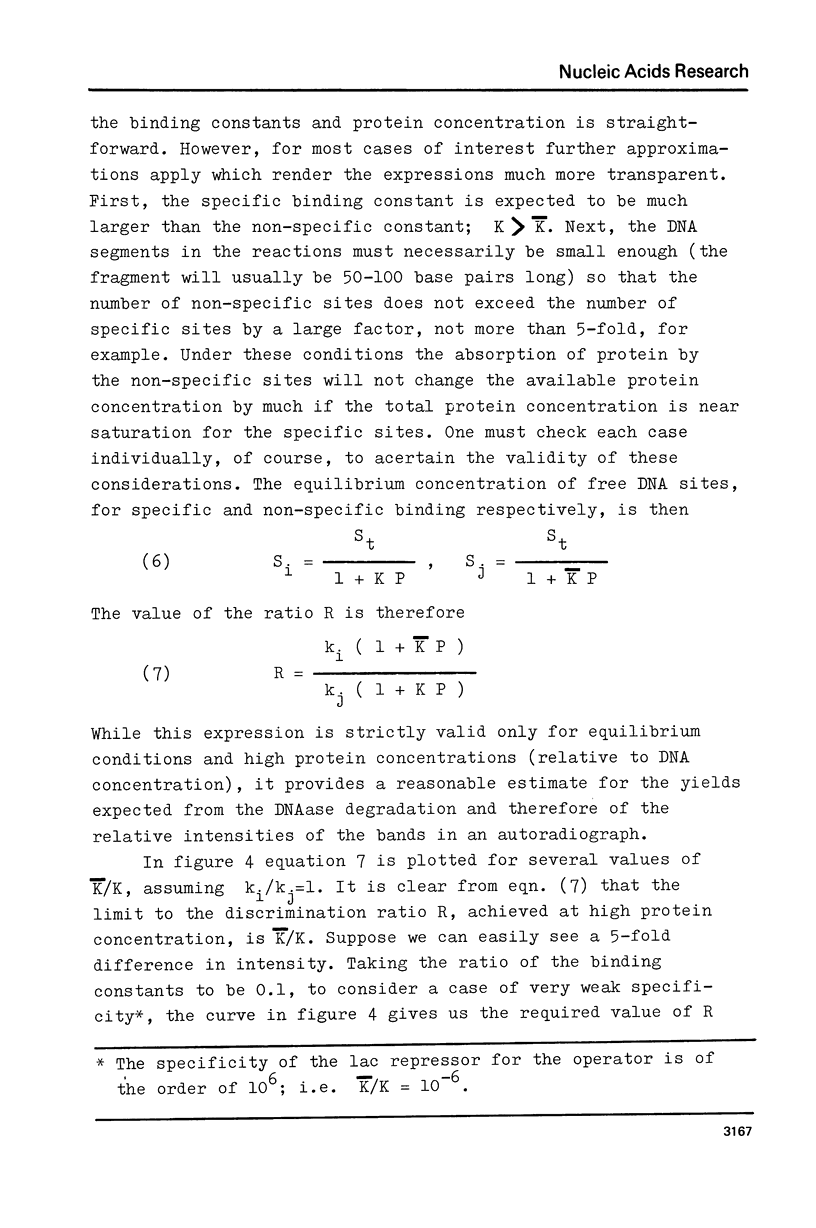
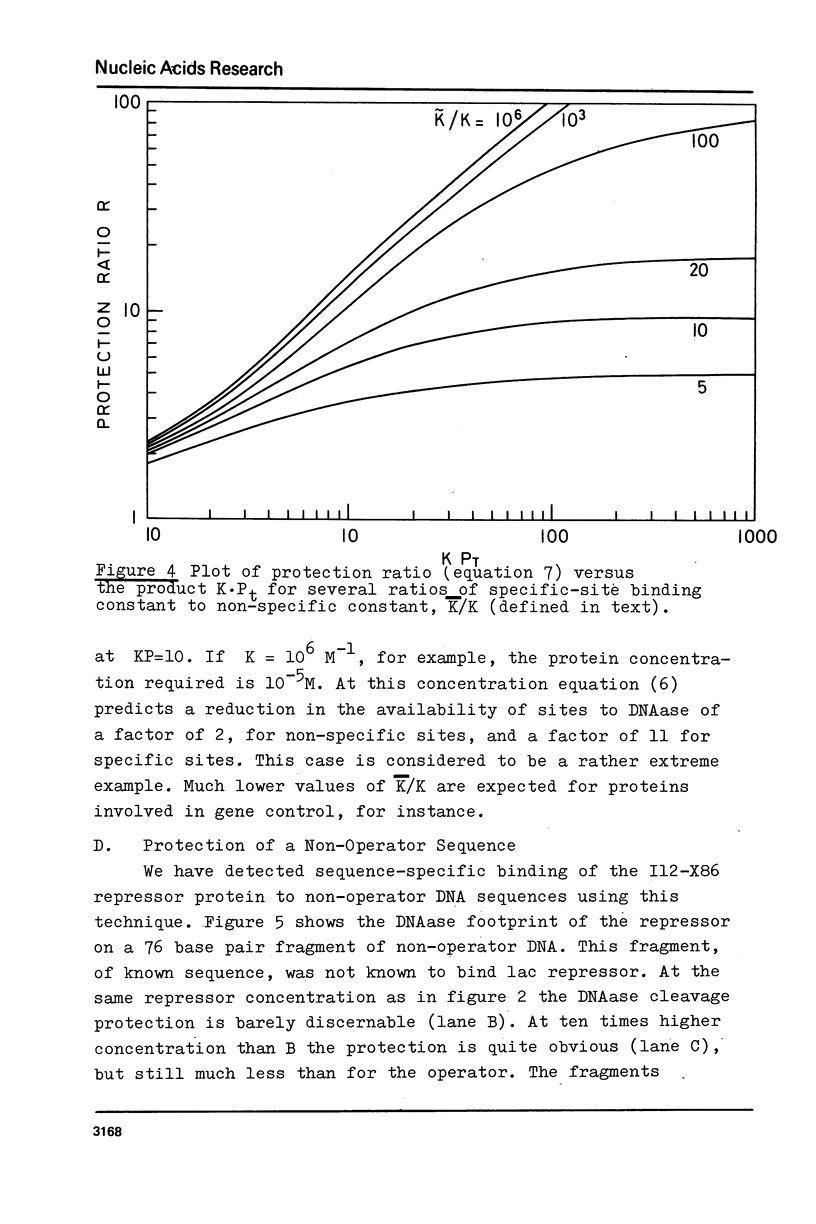
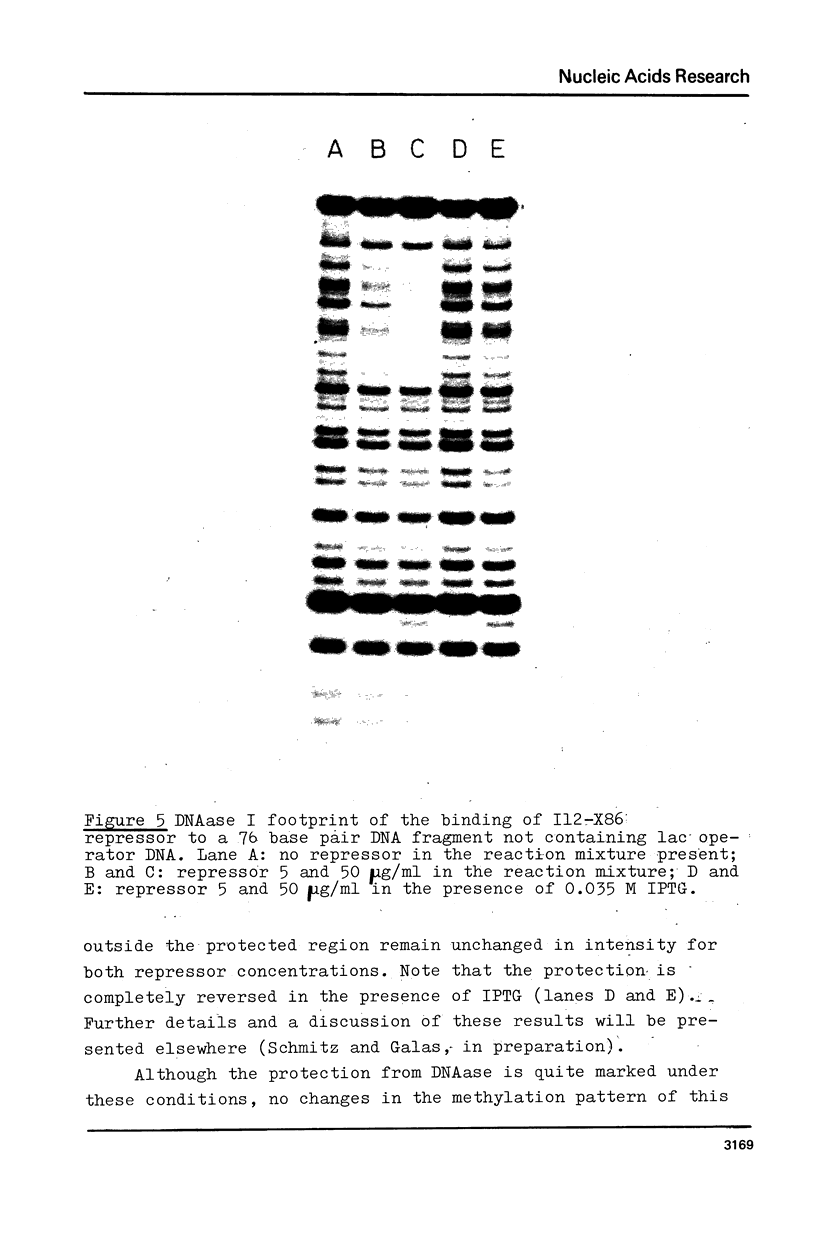
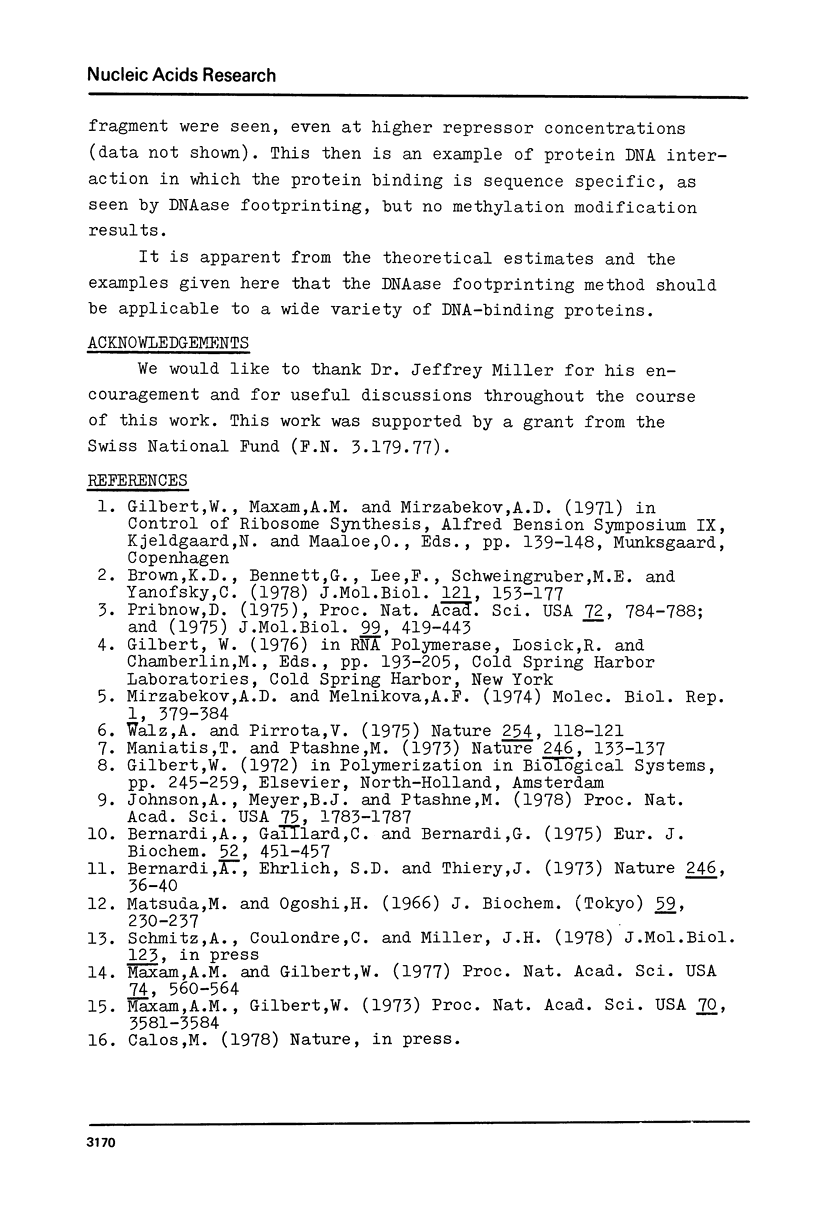
Images in this article
Selected References
These references are in PubMed. This may not be the complete list of references from this article.
- Bernardi A., Gaillard C., Bernardi G. The specificity of five DNAases as studied by the analysis of 5'-terminal doublets. Eur J Biochem. 1975 Apr 1;52(3):451–457. doi: 10.1111/j.1432-1033.1975.tb04013.x. [DOI] [PubMed] [Google Scholar]
- Bernardi G., Ehrlich S. D., Thiery J. P. The specificity of deoxyribonucleases and their use in nucleotide sequence studies. Nat New Biol. 1973 Nov 14;246(150):36–40. doi: 10.1038/newbio246036a0. [DOI] [PubMed] [Google Scholar]
- Brown K. D., Bennett G. N., Lee F., Schweingruber M. E., Yanofsky C. RNA polymerase interaction at the promoter--operator region of the tryptophan operon of Escherichia coli and Salmonella typhimurium. J Mol Biol. 1978 May 15;121(2):153–177. doi: 10.1016/s0022-2836(78)80003-5. [DOI] [PubMed] [Google Scholar]
- Gilbert W., Maxam A. The nucleotide sequence of the lac operator. Proc Natl Acad Sci U S A. 1973 Dec;70(12):3581–3584. doi: 10.1073/pnas.70.12.3581. [DOI] [PMC free article] [PubMed] [Google Scholar]
- Gilbert W. The lac repressor and the lac operator. Ciba Found Symp. 1972;7:245–259. doi: 10.1002/9780470719909.ch14. [DOI] [PubMed] [Google Scholar]
- Johnson A., Meyer B. J., Ptashne M. Mechanism of action of the cro protein of bacteriophage lambda. Proc Natl Acad Sci U S A. 1978 Apr;75(4):1783–1787. doi: 10.1073/pnas.75.4.1783. [DOI] [PMC free article] [PubMed] [Google Scholar]
- Maniatis T., Ptashne M. Structure of the lambda operators. Nature. 1973 Nov 16;246(5429):133–136. doi: 10.1038/246133a0. [DOI] [PubMed] [Google Scholar]
- Matsuda M., Ogoshi H. Specificity of DNase I. Estimation of nucleosides present at the 5'-phosphate terminus of a limit digest of DNA by DNase I. J Biochem. 1966 Mar;59(3):230–235. [PubMed] [Google Scholar]
- Maxam A. M., Gilbert W. A new method for sequencing DNA. Proc Natl Acad Sci U S A. 1977 Feb;74(2):560–564. doi: 10.1073/pnas.74.2.560. [DOI] [PMC free article] [PubMed] [Google Scholar]
- Mirzabekov A. D., Melnikova A. F. Localization of chromatin proteins within DNA grooves by methylation of chromatin with dimethyl sulphate. Mol Biol Rep. 1974 Sep;1(7):379–384. doi: 10.1007/BF00385669. [DOI] [PubMed] [Google Scholar]
- Pribnow D. Nucleotide sequence of an RNA polymerase binding site at an early T7 promoter. Proc Natl Acad Sci U S A. 1975 Mar;72(3):784–788. doi: 10.1073/pnas.72.3.784. [DOI] [PMC free article] [PubMed] [Google Scholar]
- Walz A., Pirrotta V. Sequence of the PR promoter of phage lambda. Nature. 1975 Mar 13;254(5496):118–121. doi: 10.1038/254118a0. [DOI] [PubMed] [Google Scholar]




